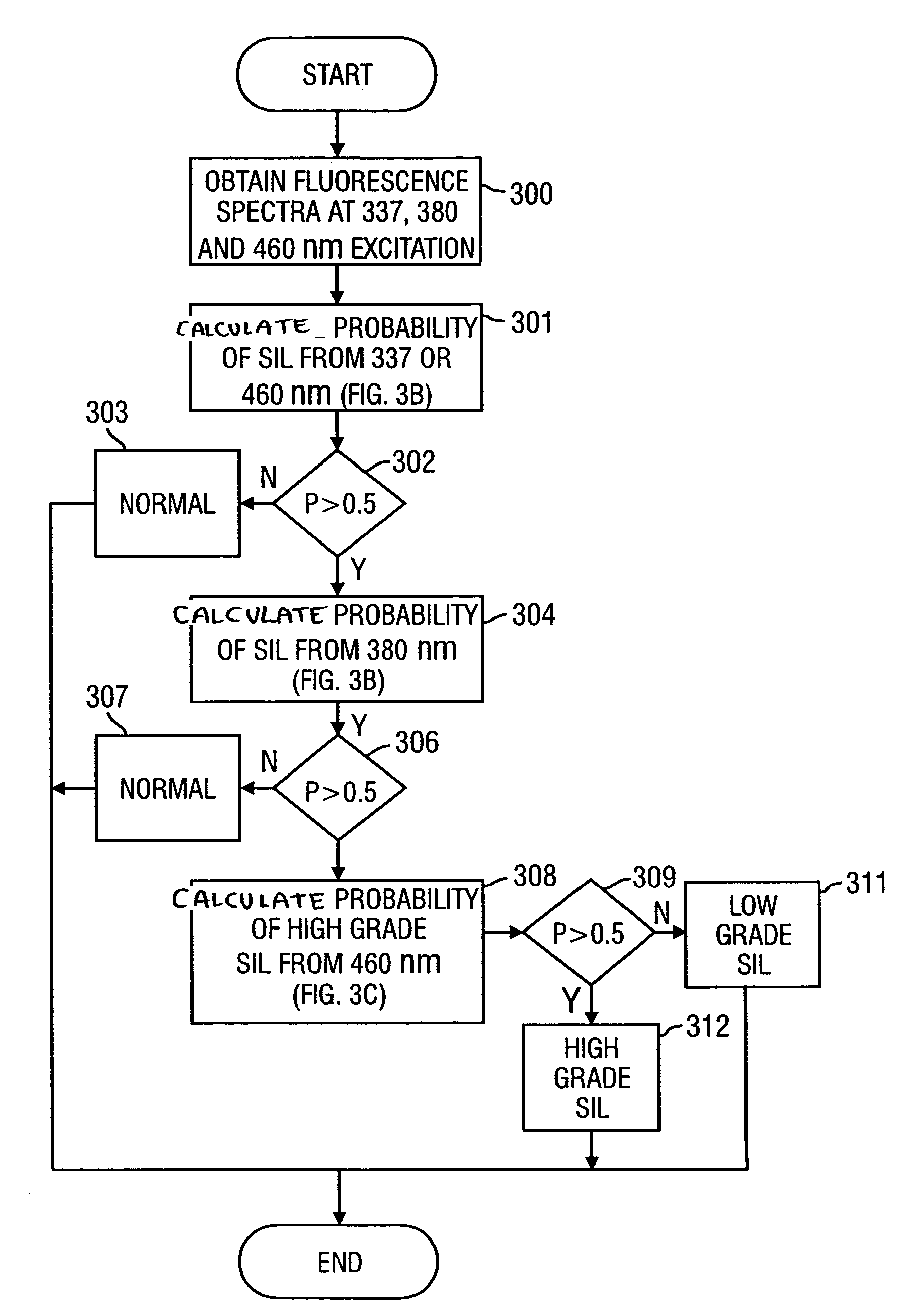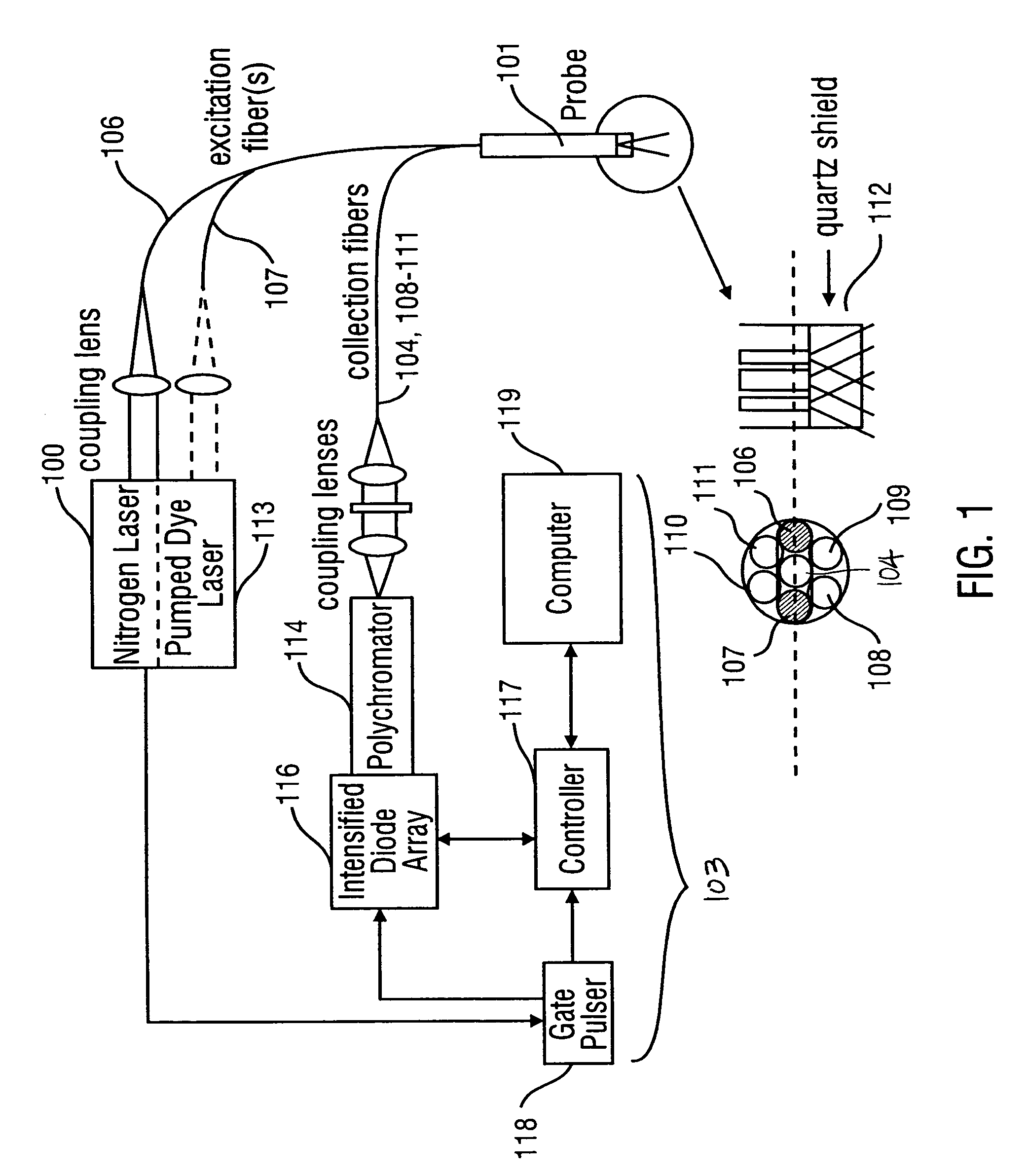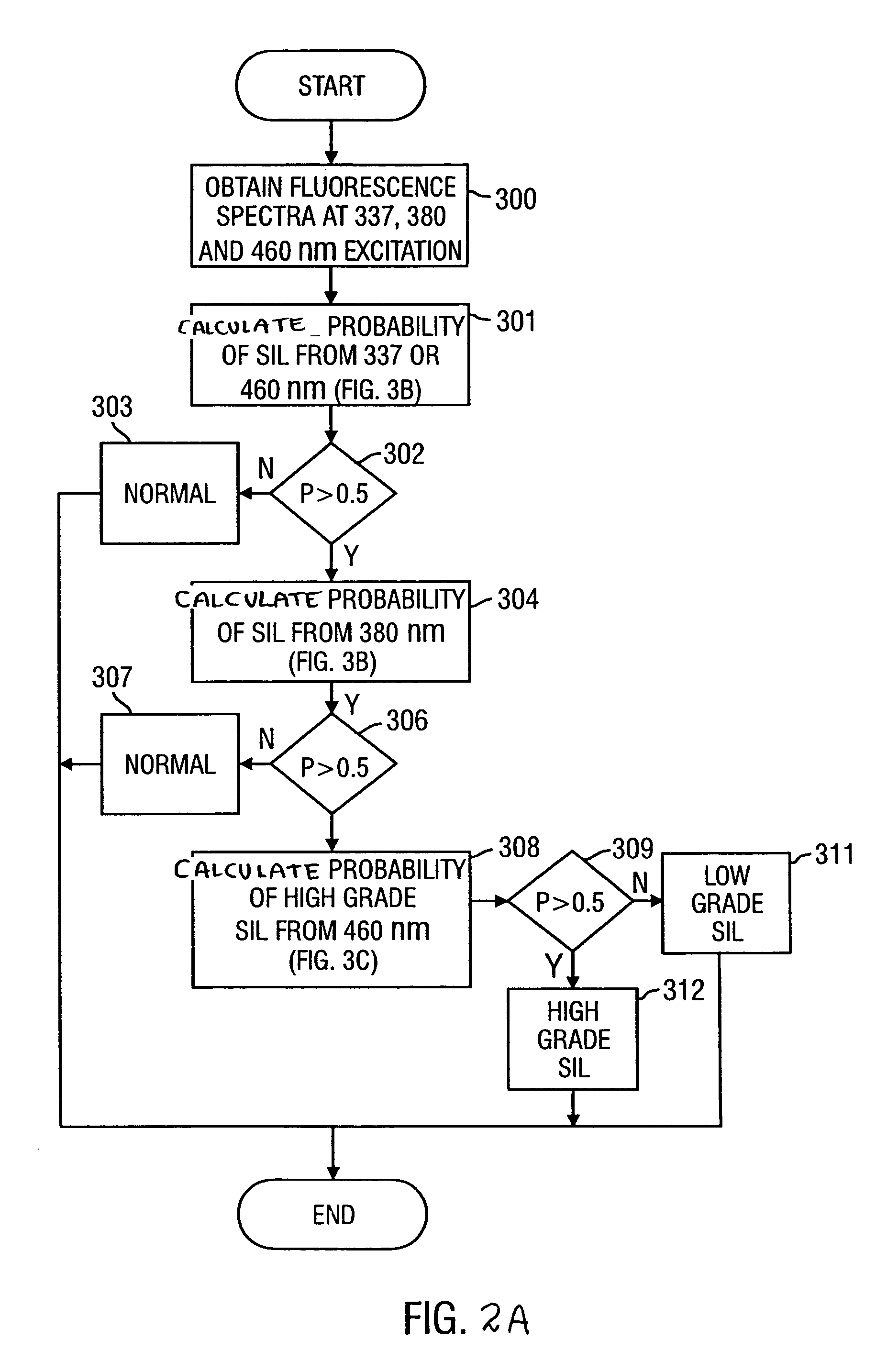Method for probabilistically classifying tissue in vitro and in vivo using fluorescence spectroscopy
a fluorescence spectroscopy and tissue technology, applied in the direction of fluorescence/phosphorescence, diagnostics using spectroscopy, instruments, etc., can solve the problems of incomplete understanding of the quantitative information contained within the tissue fluorescence spectrum, various approaches have not been entirely satisfactory, etc., to achieve faster, more effective patient management, and reduce mortality
- Summary
- Abstract
- Description
- Claims
- Application Information
AI Technical Summary
Benefits of technology
Problems solved by technology
Method used
Image
Examples
first example
[0066]Fluorescence spectra were recorded with a spectroscopic system incorporating a pulsed nitrogen pumped dye laser, an optical fiber probe and an optical multi-channel analyzer at colposcopy. The laser characteristics for the study were: 337, 380 and 460 nm wavelengths, transmitted pulse energy of 50 uJ, a pulse duration of 5 ns and a repetition rate of 30 Hz. The probe includes 2 excitation fibers, one for each wavelength and 5 collection fibers. Rhodamine 6G (8 mg / ml) was used as a standard to calibrate for day to day variations in the detector throughput. The spectra were background subtracted and normalized to the peak intensity of rhodamine. The spectra were also calibrated for the wavelength dependence of the system.
[0067]FIG. 1 is an exemplary spectroscopic system for collecting and analyzing fluorescence spectra from cervical tissue. The system incorporates a pulsed nitrogen pumped dye laser 100, an optical fiber probe 101 and an optical multi-channel analy...
second example
[0110]The first example described above is limited in two principal ways. A first limitation is that fluorescence spectra were not acquired at all three excitation wavelengths (337, 380 and 460 nm) from every patient in the study. Therefore, analysis of spectral data from these studies did not indicate if the classification accuracy of each of the three constituent algorithms developed using spectra at a single excitation wavelength could be improved by utilizing tissue spectra at all three excitation wavelengths. A second limitation of these studies is that the accuracy of composite screening and diagnostic algorithms utilizing a combination of the constituent algorithms could not be evaluated since tissue spectra were not available at all three excitation wavelengths from the same group of patients.
[0111]Thus, a first goal of the analysis in this second example is to evaluate the accuracy of constitutient and composite algorithms which address these limitations. Fluorescence spect...
third example
[0173]A goal of the analysis in this third example is to determine if fluorescence intensities at a reduced number of excitation-emission wavelength pairs can be used to re-develop constituent and composite algorithms that can achieve classification with a minimum decrease in predictive ability. A significant reduction in the number of required fluorescence excitation-emission wavelength pairs could enhance the development of a cost-effective clinical fluorimeter. The accuracy of the constituent and composite algorithms based on the reduced emission variables was compared to the accuracy of those that utilize entire fluorescence emission spectra.
[0174]The fluorescence emission spectra obtained with the instrumentation of the Second Example were used to demonstrate the method of this Third Example.
Method
[0175]“Reduced-parameter” composite screening and diagnostic algorithms: Component Loadings. A component loading represents the correlation between each principal compo...
PUM
 Login to View More
Login to View More Abstract
Description
Claims
Application Information
 Login to View More
Login to View More - R&D
- Intellectual Property
- Life Sciences
- Materials
- Tech Scout
- Unparalleled Data Quality
- Higher Quality Content
- 60% Fewer Hallucinations
Browse by: Latest US Patents, China's latest patents, Technical Efficacy Thesaurus, Application Domain, Technology Topic, Popular Technical Reports.
© 2025 PatSnap. All rights reserved.Legal|Privacy policy|Modern Slavery Act Transparency Statement|Sitemap|About US| Contact US: help@patsnap.com



